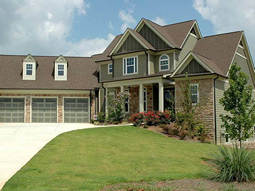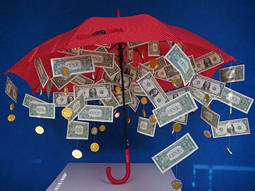MN Flood Insurance
Floods disrupt lives and destroy property – it is the number one disaster in the US. Minnesota is not exempt from experiencing the ravages of floods and there are high risk flood areas all over the state. This makes adequate flood insurance MN vital for residents. Because the individual level of risk can be difficult to determine, professional advice is recommended when buying flood insurance in Minnesota.
1. Three truths about flood insurance MN state
Floods are a major threat to Minnesota residents. Rain and melting snow are the major causes of flooding disasters in the state.
However, property owners are often unaware of the basics of flood insurance.
- The standard homeowner’s insurance policy does not include flood protection. It has to be purchased separately.
- Residents shouldn’t depend on disaster assistance. You only get assistance when the President declares a disaster, which happens less than 50 percent of the time. In most instances, it’s your responsibility to have the damage repaired.
- If you’re discouraged by the flood insurance cost, remember that it’s still cheaper than paying back a disaster loan.
2. What is the National Flood Insurance Program (NFIP) and how it works for Minnesotans
The (NFIP) is controlled by the government and managed by The Federal Emergency Management Agency (FEMA). The program covers damages that result from flash floods, hurricanes, winter storms or heavy rains and collaborates with private insurance companies.
Participating communities must accept state and federally approved floodplain ordinances. In turn, this gives local residents access to federally subsidized flood insurance. About 95% of Minnesotans live in a community enrolled in the NFIP and are thus able to purchase flood insurance.
Residents who have a mortgage or loan from a federally-backed lender, and live in high-risk areas, or Special Flood Hazard Areas, must buy flood insurance. But you are at risk even if you live outside the high-risk areas; with about 25% of flood insurance claims originating outside these areas.
The factors determining the premium of the MN Flood Insurance are the home’s structure, where it is located within the floodplain and the terrain on which the home is built. Premiums are set by FEMA and do not vary between companies.
Flood insurance MN can be purchased at any time; however, there’s a 30 day waiting period before it goes into effect.
3. When do I Need this type of Insurance?
Your level of risk will determine the kind of flood insurance you need. Since your home, condo or renters insurance doesn’t include flood insurance, it is your responsibility to purchase coverage.
Start by having a look at FEMA’s floodplain maps which lists areas as 10-year, 30-year, 50-year or 100-year floodplains. These are based on elevation, a slope of the land, soil, and proximity to water sources.
Next, you need to know what kind of water damage your current policy covers. Rising rivers, creeks and heavy rainfall, among others, all result in floods. That’s why you need a good local agent to ensure that your current coverage is sufficient to protect your property.
If you need assistance to find the best flood insurance quote for your circumstances, contact us – your independent agent. He can compare policies from different insurers and help you purchase additional coverage if needed.
4. What Kind of Flood Insurance is available?
There are different kinds of flood insurance coverage available:
- General Property Policy can be used to cover 5 or more family residential and non-residential buildings.
- Residential Condominium Building Association Policy ensures condominiums and townhouses.
- Standard Flood Insurance Policy – Dwelling. This is the most often used coverage. It ensures up to 4 family homes and single-family residences in a condo/townhouse building.
4.1 Standard dwelling coverage offers you two options:
- Building property coverage – up to $250,000
- Personal property coverage – up to $100,000
4.2 Advantages of combining the two coverage types.
Although you can buy just one of these options, it is recommended that homeowners purchase both options. If you have a mortgage, you’ll have to purchase the flood coverage required by the mortgage company.
A combination of the two coverage types will cover most things in your home. The exceptions will usually be damage to cars and ATVs, outside belongings like landscaping, swimming pools; and currency, precious metals, or stock certificates.
The flood coverage for a multi-story home is more complex. The location of the home, as well as its age, will be taken into account. There will be limit coverage for a home with basements and crawlspaces, regardless of the type of home or its age.
4.3 Replacement cost value
A flood insurance policy will not pay out more than the exact amount of the policy (i.e. only $250,000 for structural damage). However, building property flood insurance can be bought, either at replacement cost value (RCV) or actual cash value (ACV). You can only buy personal property flood insurance at ACV coverage amounts.
Replacement cost value: The cost to replace items that are damaged, where no depreciation is taken into account.
4.4 Actual cash value
Actual cash value: This is the price of replacing objects when the loss occurred and takes depreciation into account.
If all this sounds complicated, it’s because flood insurance is complex. That’s why it’s highly recommended that you contact a professional agent, who will help you find the best coverage for your specific circumstances.
5. What is covered by Flood Insurance?
Structures damaged by flooding caused by melting snow, extreme rainfall etc. are covered by flood insurance. A home along a shore that is exposed to waves, currents or rising water is covered by flood insurance in the instance of erosion damage.
If you live in a high-risk mudslide area, be aware of what your insurance policy covers. Although the damage caused by mudslides is sometimes covered, the policy may have explicit definitions in regards to mudslides.
6. How much does it cost?
The premium of your Flood Insurance in Minnesota will depend on the location of your property. Premiums are higher in high-risk areas where flood insurance is mandatory. Flood insurance cost cheaper in areas where the flood risk is lower.
In Minnesota, the average annual premium is $849 (as of June 2016). However, outside of the high flood risk area, flood insurance cost less than $200 annually.
Information about insurance rate increases can be found here.
7. Where Can I Buy?
Although the NFIP supports most flood policies, they are sold by private insurers. Residents in communities that are part of the NFIP can contact a local agent to purchase flood insurance. You’ll get the best information about the flood insurance quote suited for your circumstances from an agent in your area. The agent can also help you save money on your premium, and suggest changes to your coverage if needed.
Water is an incredibly powerful force in certain circumstances. Flood damage can be financially crippling if you need to make repairs to your home and replace damaged property. It pays to be prepared.
















